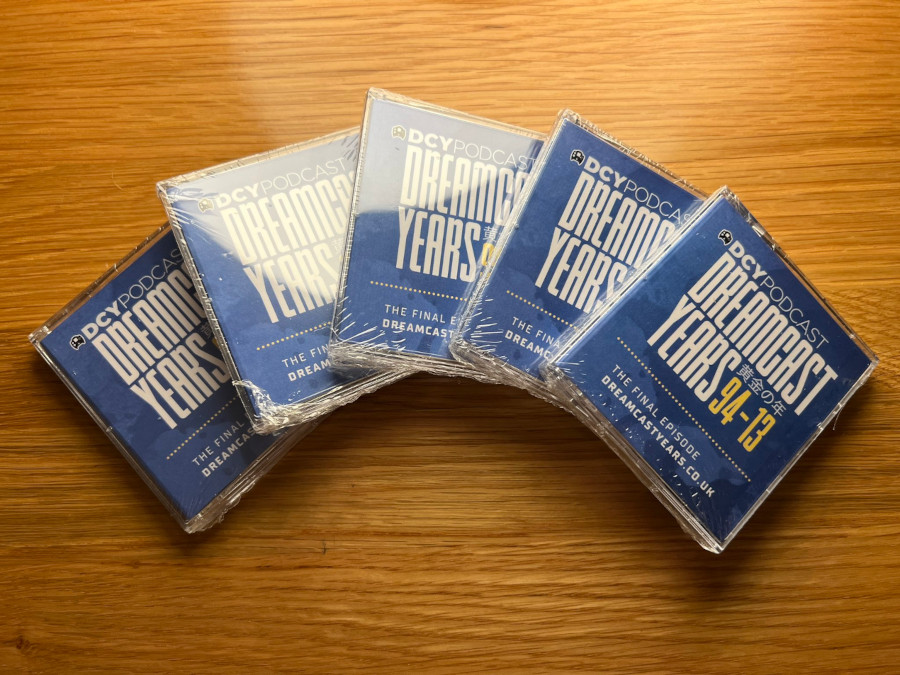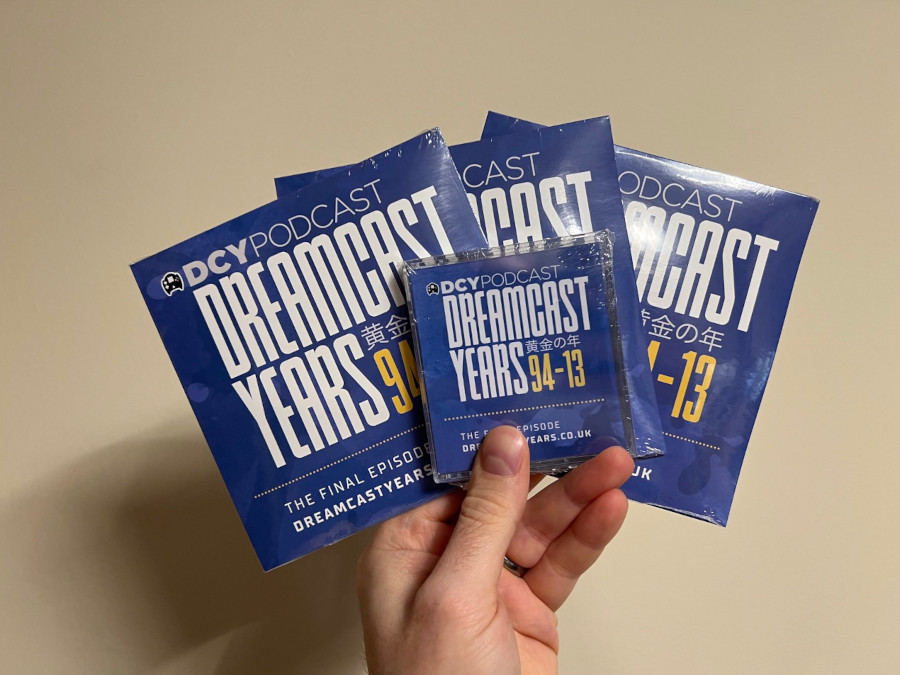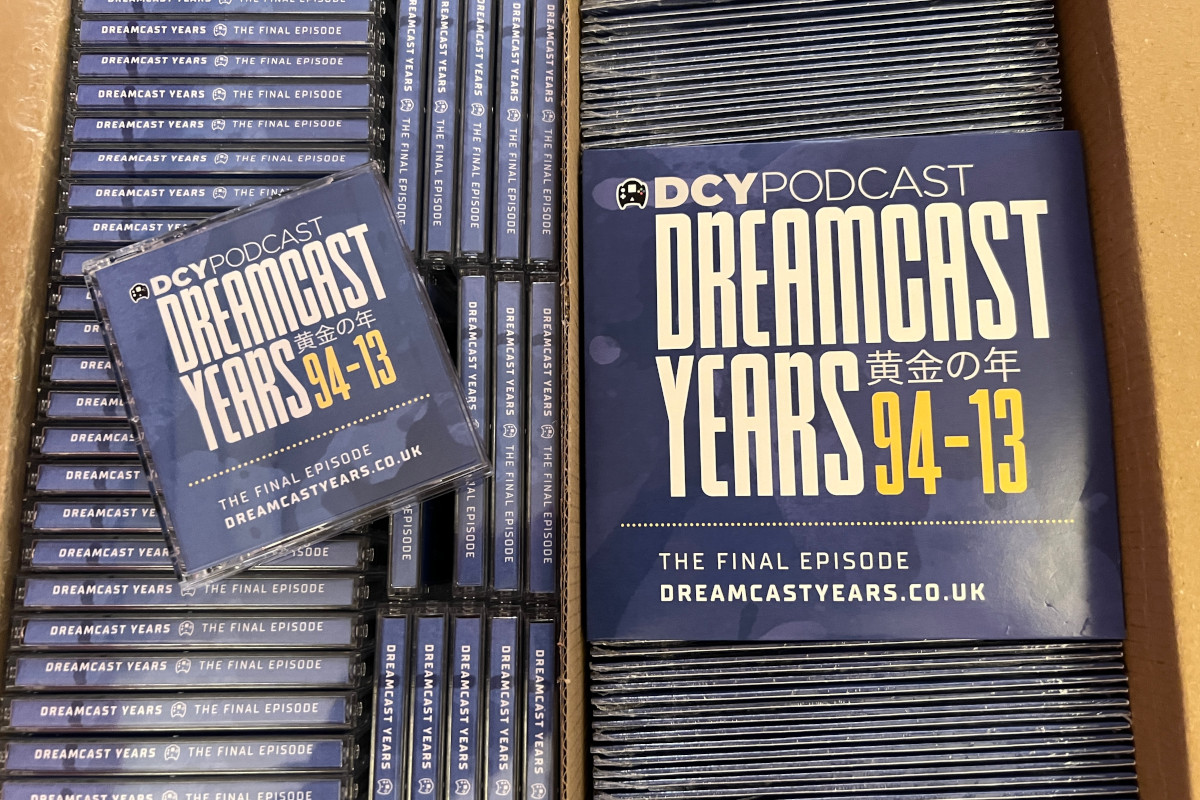The Dreamcast Years podcast is ending with a nostalgic audio treat. RJJ Software helped them make a memorable tribute to a beloved game system.
A Very Special Episode on a Very Special Console
Novelty is great for making a splash, but it creates technical challenges, as Andrew Dickinson, author of books and podcasts about the Dreamcast console, is all too aware.
The Dreamcast was the first mainstream console to focus on online gaming and ushered in the sixth generation of console hardware. Though it was technically ground-breaking, it wasn’t the big success Sega hoped for. Launched in November 1998, it was abandoned by the company after only two and a half years. It seemed to prove that novelty, however significant, couldn’t keep a project alive.
Though it was orphaned by its parent company, the Dreamcast was adopted by an enthusiastic scene of indie developers, whose releases have kept the console alive. Between its technical innovations and its unusual place in the gaming market, the Dreamcast has become an object of fascination.
I have a soft spot for MiniDisc, so I decided to do something different by putting an episode of a podcast out ONLY on physical media!
Andrew tapped into this fascination with his Dreamcast: Year One book project, which chronicled the birth of the Sega Dreamcast. Recognising the huge influence of the systems and games released around that time, he followed it with the Dreamcast Years podcast, discussing what he saw as gaming’s golden years.
“Since my first book did well, I wanted to do something extra special when it came to launching the funding campaign for Dreamcast: Year Two,” Andrew explains. “I have a soft spot for MiniDisc, so I decided to do something different by putting an episode of a podcast out ONLY on physical media!”
Any audio project comes with a set of technical challenges, and a podcast episode without the podcasting added layers of complication. To tackle this, Andrew turned to Mark Taylor, chief audio editor and engineer at RJJ Software.
The Right Podcast Producer for the Job
When you’ve got an unusual project, you need professionals who can rise to the challenge, not just achieving something unusual but getting the fundamentals right. Naturally, Andrew turned to someone he knew was up to the job.
“I’ve worked with Mark on previous projects, including episodes of the Dreamcast Years podcast,” Andrew explains. “He’s a consummate professional, and he always goes above and beyond to make sure things are done to a high standard.”
The leader of RJJ’s audio engineering and podcast services arm, Mark is an audio engineer and editor with five years’ commercial experience. He has worked on a wide range of podcasts in the technology and entertainment fields, providing the constant improvements in quality that have twice made The Modern .NET Show an award winner.
The most unusual challenge for me was working to a specific set of parameters for audio production
For Mark, using the right tools was fundamental to getting the episode right.
“Adobe audition was the main tool I used for the initial edit and it’s the tool I use most for the projects that I undertake for my clients,” Mark says. “As a piece of editing software there is a lot of control and tools within the program that I can use to fix, massage and iron out the kinks with the projects I take on. This gives me greater control of the quality of the audio and ensures that I can produce the best edits.”
As chief audio editor and engineer, Mark’s job involves much more than filtering sounds and stitching snippets of conversation together. There are numerous technical challenges that arise from trying to make a podcast sound clear, crisp, and consistent while working with wildly different source files and levels of background noise.
On top of this, he has to manage the project, keeping the work on track while adapting to the client’s needs. When working with Andrew, Mark took an Agile approach to the project, using incremental changes and constant communication to streamline the process.
Mark prides himself on his flexible and creative approach to his work, and on constantly improving his podcast production skills. “With all of the features that are included with Audition, I haven’t yet used them all, so that means I’m always learning. Every day is a school day.”
Tackling Unique Audio Challenges
The unusual distribution method for the Dreamcast Years’ final episode made that adaptability and creativity crucial.
“The most unusual challenge for me was working to a specific set of parameters for audio production,” Mark explains.
Thanks to digital distribution, most podcasts don’t have a hard time limit. They might aim for a specific length, but even those with a time limit in their tagline seldom match it. While podcasts taken off broadcast radio might stick to timeframes, most digital natives have given up on these boundaries, running to whatever length their content dictates.
For this project, that wasn’t an option. To fit onto Andrew’s physical media, the podcast couldn’t run longer than 79 minutes and 30 seconds. Mark faced the delicate balancing act of containing the podcast within those limits while keeping all the content that mattered. Decisions about what to keep and how to present it weren’t straightforward, requiring close collaboration with Andrew.
“Having a time limit for the audio meant I had to be in constant communication with the client,” Mark explains. “There was constant back and forth to edit the audio so that it fit the time limit, ensuring that it could be printed to the CD/MiniDisc.”

The challenge was increased by working to well-defined chapters with audio from more than two sources. Double checking each audio track separately was time-consuming work, but necessary to ensure the best results. Mark took the opportunity to practice new skills and develop new ways of working.
“Creative edits and learning new ways to approach requests by the client was one of the things I had to ‘learn on the fly/on the job’,” he explains. “Taking the Agile approach was the only way to accommodate the client, keeping me on my toes at the same time.”
For Andrew, the results more than justified the extra effort.
“Working with Mark and RJJ has been brilliant,” Andrew says. “They make everything straightforward, and in our meetings they have always been knowledgeable and prepared for any eventuality. I felt like they cared about the unique perspective of my podcast, as well as my time.”

What Next?
Working with Mark and RJJ has been brilliant. They make everything straightforward… I felt like they cared about the unique perspective of my podcast, as well as my time
With this special project completed, both Andrew and Mark are moving on to other projects. For Mark, this means the uncertainties and opportunities of working with a wide range of creative clients.
“I can’t say what the next project will be, it depends on the work that comes in. However, I approach each project with the same mindset of giving my full attention, concentration and Agile approach to ensure I deliver to the highest standards. My personal thought on my work is this: ‘I’ll give my all to what I’m working on and the next project will be my best yet’.”
It’s an approach that has worked well for many clients, Andrew included. Now the operations director for indie book publisher Lost In Cult, as well as the editor-in-chief for their flagship publication the [lock-on] gaming journal, he’s currently eyeing up his next audio project. “I hope to launch a new podcast in the near future, and I will be calling on RJJ for their services when I do!”
In the meantime, if you want to learn about a unique piece of console gaming history, you can find the results of Andrew and Mark’s work at Dreamcast Years.
Find Out More…
For more of Andrew Dickinson’s work, check out The Dreamcast Years for his books and podcasts, as well as indie book publisher Lost In Cult, where he’s operations director and editor-in-chief of the [lock-on] gaming journal.
For more about the services that Mark and the RJJ team can provide, or to get a quote for your own project, check out RJJ Software.
